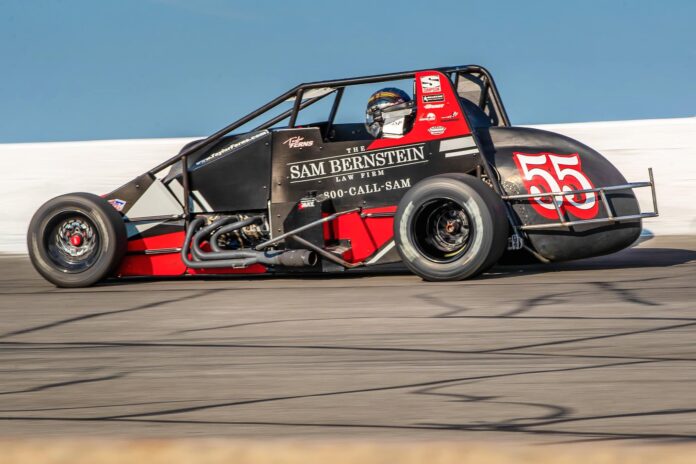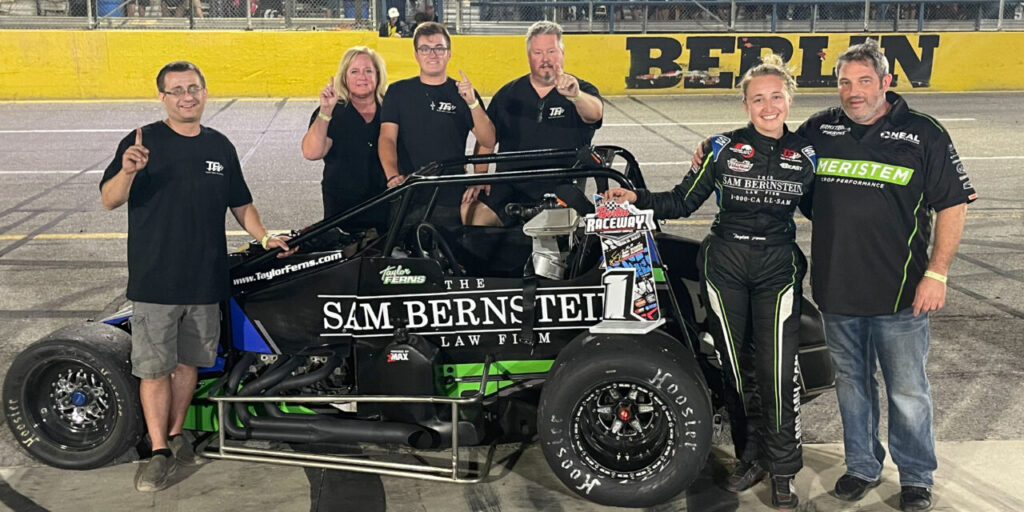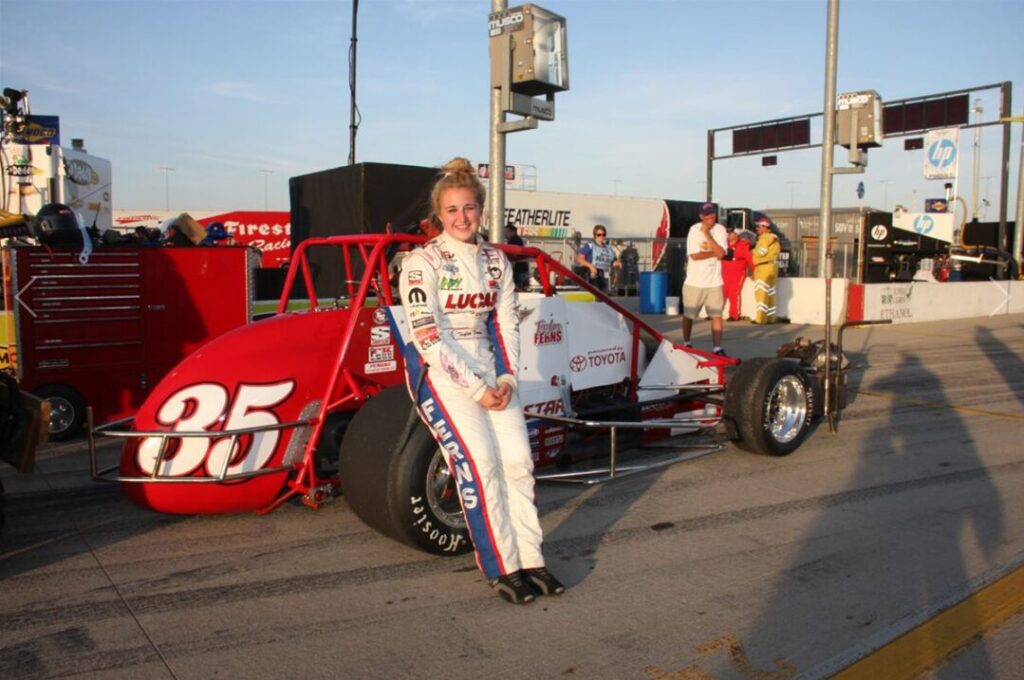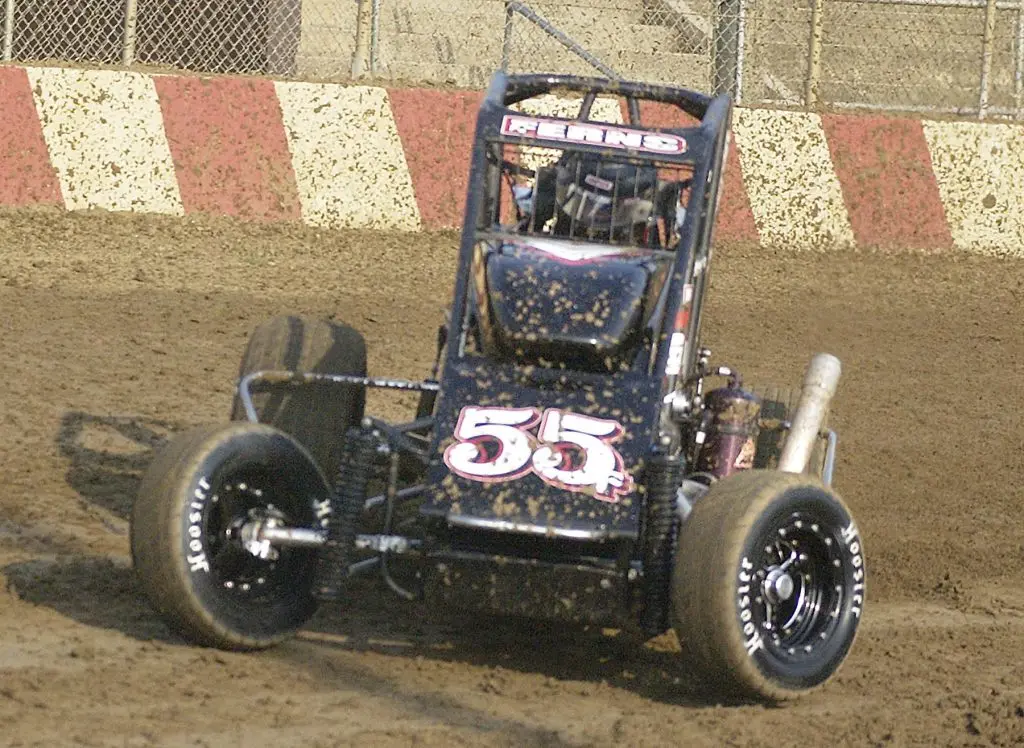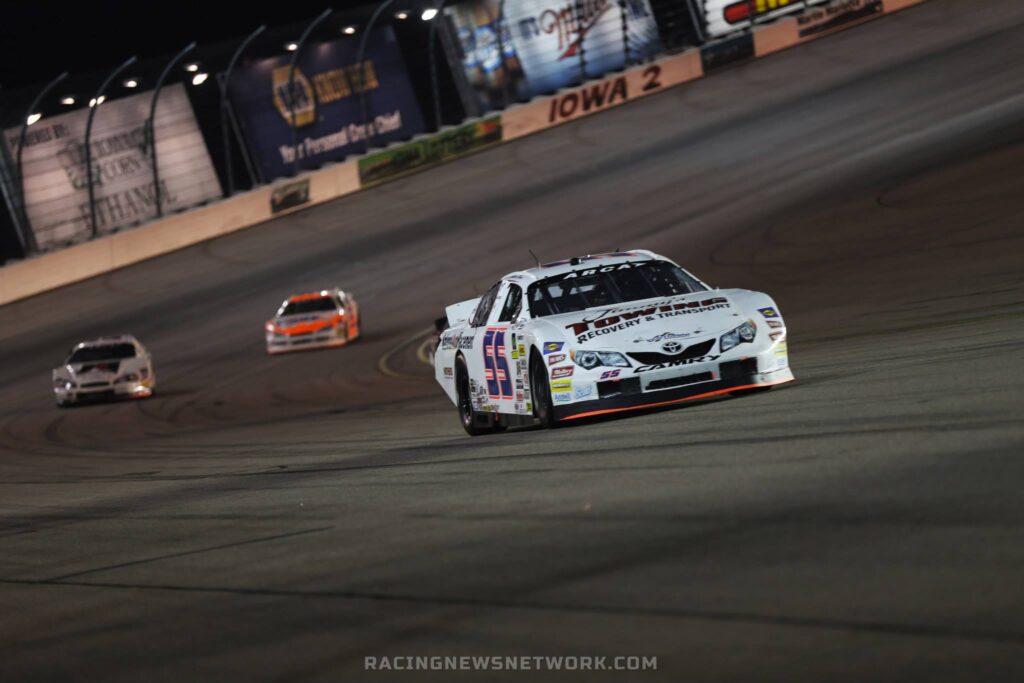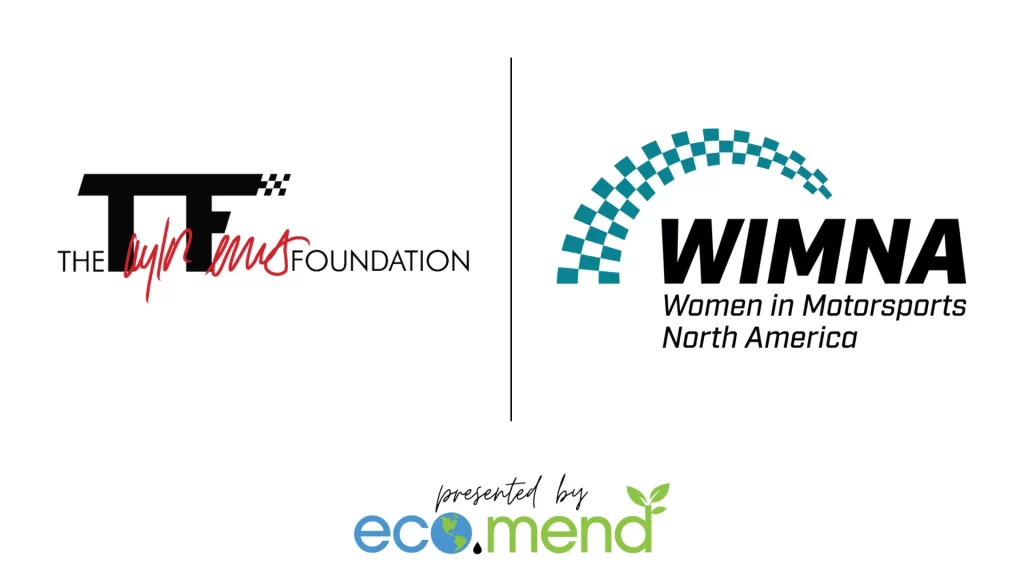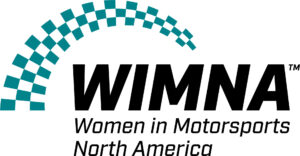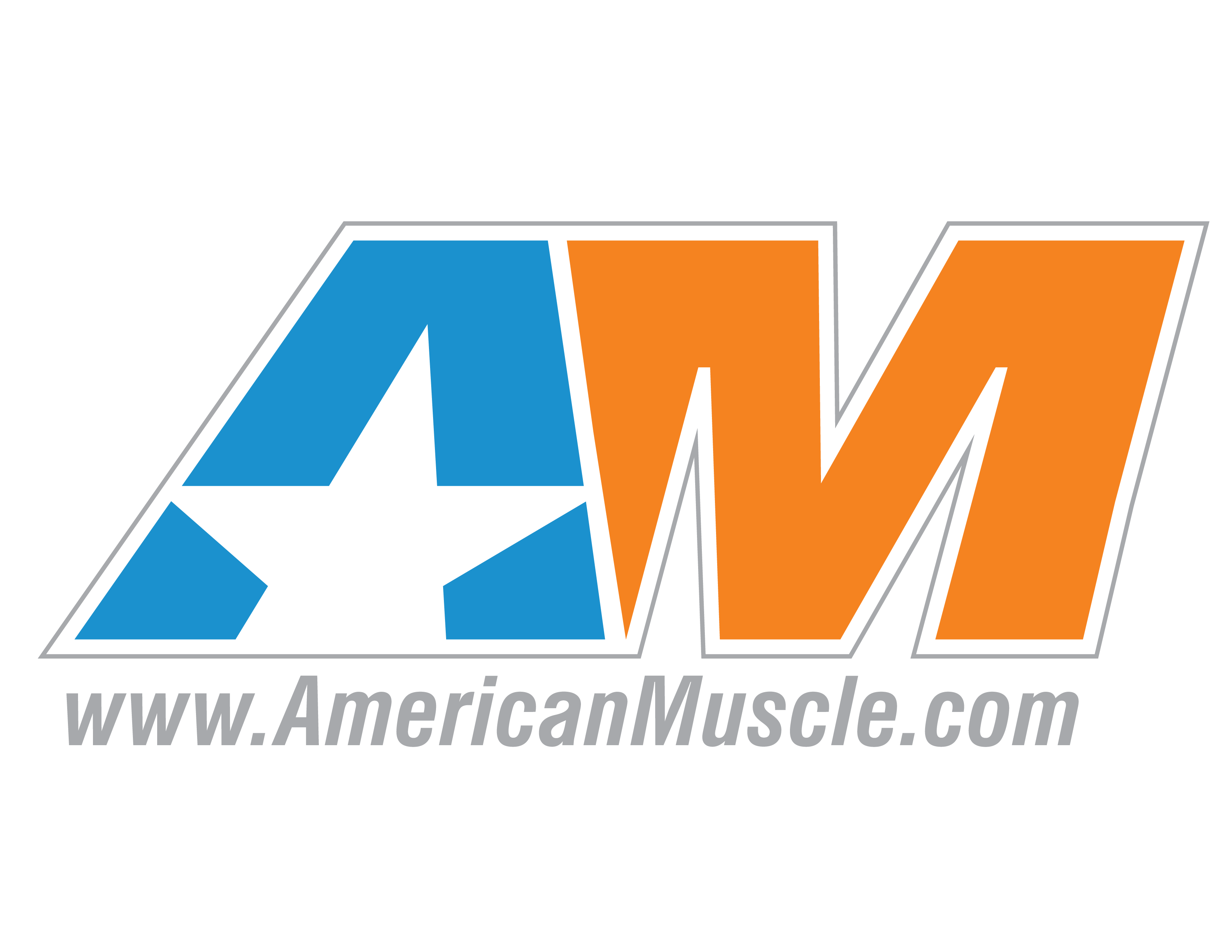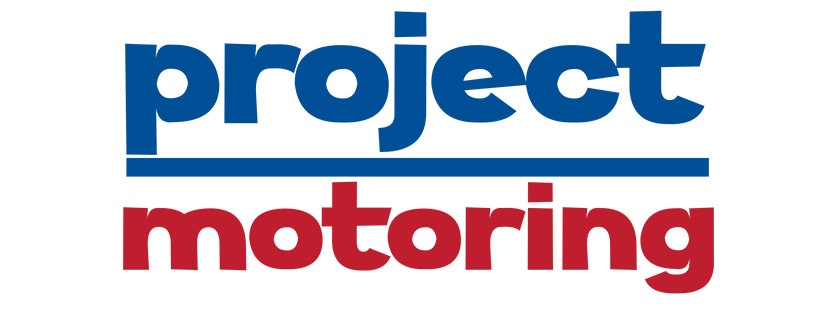Tonight’s guest is an accomplished racecar driver, team owner, law student, writer for Speed Sport, co-host of On the Drive, and so much more! Throughout her 22-year racing tenure, she has won numerous races, championships, awards, and set records that do not only pertain to her gender, in a diverse portfolio of racecars, and on varying race surfaces.
As a United States Auto Club (USAC) champion, Taylor Ferns has carved a name for herself within the open-wheel ranks including, but not limited to, being the youngest female driver to win a sprint car race, becoming the first female to win USAC midget and sprint car races at a multitude of racetracks, being the second female to ever win a USAC championship, having the most USAC Silver Crown starts by a female, and having the highest finish by a female in USAC’s 51-year Silver Crown history. And she’s here with us on Break/Fix to share her Motorsports journey with you!
Spotlight
Taylor Ferns - Pro-Driver & Lawyer for WIMNA
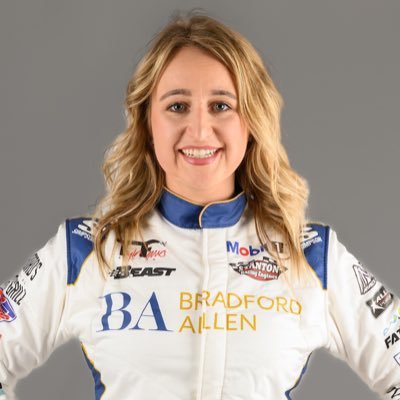
Taylor Ferns, at 27 years old, is an accomplished racecar driver, third-year law student, and Operations Manager at The Sam Bernstein Law Firm. Throughout her 21-year racing tenure, she has won numerous races, championships, awards, and set records that do not only pertain to her gender, in a diverse portfolio of racecars, and on varying race surfaces.
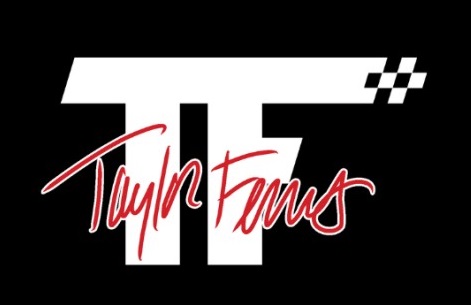
Contact: Taylor Ferns at Visit Online!![]()
![]()
![]()
![]()
![]()
Notes
- Let’s talk about The who/what/where/when/how of Taylor – how did you get into Motorsports? Did you come from a racing family? Something you picked up as a hobby or by way of friends?
- So you’re a lawyer too (or soon to be), eh? Tell us about that… Why law? (does the racing drive the law career, or the other way around?)
- Who were the women at the time, as you were starting out that inspired or helped you build a career in motorsports?
- The role of Sim Racing in the future of the sport. Circle/Short Track is getting some love from iRacing – does simulation help/hurt Motorsports?
- Let’s talk about the good, the bad and indifferent of racing – the business side of things.
- If a young girl walked up to you today and asked, Why do/did you race? What would you say?
- What’s next for Taylor? Any spoilers? Big events you’ll be at?
and much, much more!
Transcript
[00:00:00] BreakFix podcast is all about capturing the living history of people from all over the autosphere, from wrench turners and racers to artists, authors, designers, and everything in between. Our goal is to inspire a new generation of petrolheads that wonder. How did they get that job or become that person?
The road to success is paved by all of us because everyone has a story. The following episode is brought to us in part by the women in motorsports, North America, a community of professional women and men devoted to supporting opportunities for women across all disciplines of motorsport by creating an inclusive, resourceful environment to foster mentorship, advocacy, education, and growth, thereby ensuring the continued strength and successful future of our sport.
Tonight’s guest is an accomplished race car driver, team owner, law student, writer for Speed Sport, and co host of On the Drive. Throughout her 22 year racing tenure, she has won numerous races, [00:01:00] championships, awards, and set records that not only pertain to her gender. but also in a diverse portfolio of race cars on varying race surfaces.
As a United States Auto Club USAC champion, Taylor Ferns has carved a name for herself within the open wheel ranks, including, but not limited to, being the youngest female driver to win a sprint car race. Becoming the first female to win a USAC midget and sprint car races at a multitude of racetracks.
Being the second female ever to win a USAC championship. Having the most USAC silver crown starts by a female and having the highest finish. By a female and USA sees 51 year silver crown history. She’s here with us on break fix to share her motor sports journey with you. And with that, let’s welcome Taylor to break fix.
Hi guys. Thanks for having me. I’m excited to chat with you all. And joining us tonight is our returning cohost break fix. Lauren Goodman, supervising producer of media and exhibitions for the [00:02:00] revs Institute. So welcome back to the show, Lauren. Thanks for having me. Well, Taylor, like all good break fake stories, there’s a super heroine origin story.
So tell us about the who, what, where, and when of you, how did you get into motorsports? Did you come from a racing family? Did you pick it up as a hobby? How did you get into this? Like a lot of people, I feel like you interact with and motorsports. A lot of them come from some forum of a racy background or parents, you know, that were mechanics or did something within the motorsports community in some way.
My two uncles on my maternal side actually raced late models and stock cars back in the eighties and early nineties. As soon as I came around, you know, I would just always grew up around it. Daytona 500s were like the Superbowl to us and kind of always had an idea at a young age that I was going to do something in motor sports as weird as it sounds like reflecting on it.
But at such a young age, there wasn’t a lot of visible females within the industry. So I never really was sure what that was going to be. When I was six years old, my [00:03:00] dad and my uncle, who had previously raced, had did some research, and a neighbor of ours had a quarter midget, which is like a go kart with a roll cage around it, and they found one for sale in nearby Lansing, Michigan, like an hour and a half away from our home.
It was like a family weekend trip. I have two younger siblings, and my parents all hopped in the Yukon, and we drove to Lansing, and as soon as I sat in the car, I just fell in love with it. I’ve been hooked ever since, 22 years on, and You know, I’m still here. You know, I did take a few years off there. I had some gap years, you know, racing’s expensive.
So it takes a lot of money, a lot of support to do this. And I knew if I was to go any further, I was going to need a lot more money than what I was already fortunate to have access to, but it was going to take even more than that. And so my dad was just kind of like, you know what, it’s time to maybe focus on the education and kind of always come back and do this.
Took some time off, went for my bachelor’s, graduated with honors. Went for my master’s, I started at law school and my job that I had, I worked for five [00:04:00] years as an operations director at the San Bernstein Law Firm. Working there is what brought me back in a way because they helped sponsor me and when I started racing again in 2019, they helped get me back on the track.
If it wasn’t for them, you know, maybe I wouldn’t be talking to you right now. I have lawyers coming out the wazoo in my family. My dad, my sister, my first cousin, once removed. My time in the law firm showed me that the law wasn’t for me. But what’s really, but I really like track. Yeah. The question is you who love being on the track.
What is it about the law that is still really interesting? When I was in high school, I was obsessed with racing. Obviously I still am, but as a teenager in high school and already missing 60 days a year, I was like, I don’t even see myself going to college. Like that was my mentality. When I started going to Grand Valley State University and I took my business law class.
I joke and say this story, but the first two weeks, the professor was like, Oh, you know, Michigan state has a special three and three program. If you’re interested, come see me. And I would just laugh. I’m like, there’s no way [00:05:00] I’m going to put my time and be done. Two weeks later, I was in professor Sanford’s office.
Like, how do I get into this Michigan state three and three program? I mean, I was just obsessed with the business law class. You know, at that time I wasn’t racing. And so, you know, I put so much time, focus, energy, competition. And to me, a lot of it, I think was the competition and the speed with racing. And so when I didn’t have that anymore, I was trying to compete with my academics.
And this isn’t a dig or anything on marketing, but I was originally like marketing and entrepreneurship major. And I ended up switching to finance and economics cause I wanted something that was just going to be super challenging for me. I think it was almost like the way of like complex thinking really challenged me.
And then I felt like I had a lot to relate to as far as like the business realm goes, seeing my parents growing up, like run their own businesses. And you know, my grandfather, the same way, there’s a lot of overlap there. You know, here I am, I’m graduating this May. So I definitely think a lot of it just goes back to the challenge of it.
You know, I love challenging myself. And so [00:06:00] I feel like. People will see that in a lot of the things that I take on. Talking about the family business and sort of assessing the lay of the land and bringing your law degree with you. Have you found a way to partner together your racing career and your law aspirations?
Are you looking for a way to marry the two up? 100%. Actually, it was when I first sat down to take the LSAT, it was like a light bulb went off in my brain because. You know, I come from an open wheel racing background. And then when I was 16, 17, I dabbled in late models and stock cars a little bit, like with Arca and I raced with the Venturini’s for a few races because I wanted to go NASCAR racing in that time.
I dealt with a lot of contracts and, you know, sponsorships. And so I ended up. An attorney that did a lot of that work within motorsports. So, you know, when I sat down and took the LSAT, I was like, I want to do what Alan Miller does and represent drivers and work on contracts and things of that nature, and it was all business related ever since then.
It was my [00:07:00] vision from then has. almost come to fruition now because I talked to some of the sanctioning bodies I have close relationships with and that I network with and one of them was like you know what when you’re done with law school we’ll set you up with an office in Indy and you can work out of here and do a lot of the racing stuff for us.
I know I might have opportunities working in other law firms that do like contract work and things of that nature within racing as well. I’m definitely going to stay within motorsports. It’s definitely going to be the merger of two passions. So let’s dive into your racing a little bit more. You’ve mentioned some of the different cars you’ve driven, and obviously you were thrown right into the arena of circle track and short track racing.
Your world is really interesting and people don’t really realize how nuanced it is and how many different disciplines exist. Dirt versus asphalt versus short track versus sprint cars and midgets. I mean, there’s so many different things going on there. What was the progression like for you? You wanted to go to NASCAR, but did it get easier as you went up?
Did it get more [00:08:00] difficult? Which cars were the most fun to drive? You know, those kinds of things. For someone who wanted to go to NASCAR, that was a very unconventional route that I went. I started off in quarter midgets, you know, I did bandoleros, I went 600, micro sprint racing, and then I just automatically, by the time I was 12 and 13, I started in full size midgets.
And then I got into sprint cars when I was 14, and then I started racing USEC Silver Crown when I was 16, while at the same time dabbling in late models and Arcas. Mixing up the open wheel cars with the fender cars. At a young age, you kind of go with what you know. So when I was younger, I grew up around NASCAR.
Like that was the epitome, especially for my family. So it was natural and organic for me to be like, I want to go NASCAR racing. Well, at the same point in time, I loved open wheel. When I started racing the late models and the stock car stuff, I loved it. And I took naturally to it. Obviously for me to continue on, that was going to take a lot more money.
And for me, I love any race car I can get into and drive. But as far as my [00:09:00] favorite cars to race, I will always say it’s sprint cars. And obviously, like you had said, there’s so many different variations of that. I mean, you could have a wing pavement sprint car, you could have a wing dirt sprint car. A non wing pavement sprint car, a non wing dirt sprint car.
Then obviously then you have the different engine sizes, so on and so forth. You know, I started racing sprint cars when I was 14 and I’m 28 now and I’ll still say, I make it known that I love sprint car racing. You really like the open wheel cars, but what I didn’t hear in there was. Supermodifieds. Isn’t that the next step?
Yeah, honestly, I’ve never raced a supermodified. Can’t even say I’ve had an opportunity to do it, but I’m sure if I put a blast out there, tried calling somebody, might know some people within that realm. I’m sure it’s something wouldn’t be hard to do. You never know. You might see me at a supermodified race one of these days.
The aspiration was to go to NASCAR. And I wonder, was that because at the time you were seeing personalities, like let’s say Danica Patrick on television as a woman in NASCAR, or [00:10:00] were there other females in motorsport that you were inspired by? And one of the names that pops out, especially in your world is someone like Aaron Crocker, Everham, which everybody knows from Winged Nation, the first woman to win an outlaw race.
Who were you striving to be? Like? I was lucky coming up, like there was a handful of females, like Danica obviously, and indie car, and that was someone when I was growing up that I really looked up to. ’cause I really thought she was a great indie carri open wheel driver. And then obviously she transitioned to nascar.
Didn’t see as much success there, but you know, she. still like a prominent fixture as far as like drivers that I looked up to was like meeting more of the crossover drivers, like Tony Stewart or Jeff Gordon, you know, that came from open wheel and then transitioned over to NASCAR at some point. And then that’s really where they made their name more.
So for me wanting to go to NASCAR was, it was always because. When on Sundays sell on Mondays, I feel like when you bring up NASCAR racing, like, I don’t come from a prominent racing community, so to say, in Metro Detroit. But, you know, you bring up NASCAR and people recognize it, [00:11:00] whereas, like, if you try, and I hate to say it, I become a big fan of IndyCar, but you try to bring up an IndyCar and it’s not as relative, maybe, or it’s not as, like, well known, I feel like.
As you grow, your dreams evolve at the same time, and so I think right now, I’m definitely more aiming towards the IndyCar route, maybe if I had the opportunity to do something in that realm, because as far as like the easier access goes, and then relating more to what I come from now, that might be more of a realistic goal.
I love that just because as a student of motorsport history, looking at all the American greats who cut their teeth on dirt tracks. In midgets in sprint car and turn that into an incredible career at Indy. To me, that makes total sense. For me, it’s always like bringing back the nostalgia about it. I’ve become close and I’ve interacted a lot with the vintage Indy guys.
They have a shop based out of Brownsburg, Indiana, and they restore a lot of vintage Indy cars. And you learn a lot about the history of the sport, but specifically the USAC ranks and when those guys came from USAC to IndyCar. [00:12:00] You know, that’s kind of something in a way that I was hoping to bring back because I feel like it’s forgotten.
I feel like when I talk to a lot of IndyCar teams now, you almost kind of have to sell the USAC Silver Crown model to them. It’s almost like a lot of people forgot that history. That’s something that I’d like to bring back because I feel like there is so much relation and overlap there. Consider my bias, right?
But there’s a lot of the guys from, like, the USAC ranks, specifically the Silver Crown drivers, who I have a lot of respect for, but I think that they’re overlooked in a lot of ways. With that said, dirt or asphalt? What do you prefer? Uh, this is such a tough question for me because if somebody was to ask me this when I’m running better on dirt than I am pavement, naturally when I was younger, I’d be like, Oh, dirt.
And then, you know, same thing the other way around. I love them both. I love having the opportunity to go back between both of them. I think it really creates a diverse and complete driver. But, you know, I will say right now, I do lean more toward the pavement because that’s always been something [00:13:00] that’s just come natural to me and organic.
Whereas the dirt has always been something that I’ve really had to work at. But, you know, if you think about it, like, when you go silver crown racing, there’s only, like, five dirt Silver Crown race is on the schedule. Well, you’re racing against guys like Justin Grant, CJ Leary, Brady Bacon. They race those dirt nine win cars like 80 times a year.
For me to do that only five times a year. You don’t want to show up and be already defeated, but you already know at some point to be realistic. You’re fighting for fifth through 10th. I don’t like that mentality, but you got to take into context all the seat time. Right now, I just don’t have a lot of the dirt.
I definitely try to focus more on the pavement because I know that’s my strong suit right now. But just always taking away whatever I can when I race the dirt stuff. When you look at other drivers you’re with, just like certain tennis players will say, he’s great on the clay, she’s amazing on the grass.
Then he’s great on, on asphalt. Do you see that in the other drivers? Yeah, I see that in the other drivers. Even my family’s like, you’re one of the best [00:14:00] pavement drivers. Sometimes they try to like even steer me away from messing with the dirt right now. Everybody has their thing, you know, it’s like what you said, no different than basketball or football or whatever.
So everybody’s going to have their thing if they take two more. I used to think I was a pretty decent dirt driver. Practice makes perfect and I haven’t practiced it a lot. With all of your driving experience. experience. There’s comes these moments for all of us that participate in motorsport and they’re learning moments.
What’s gone wrong at the racetrack and what have you learned from it? So I will say this past season, so 2023 season definitely did not go the way that I wanted to in any way at all, did not meet any expectations that I had set and nor did we achieve any goals that I set for. Myself and my team. And so we had to overcome a lot of adversity and a lot of problem solving.
When I reflect on that, I say that there was a lot of growth there. And there is a quote that I like to turn to from Denzel [00:15:00] Washington. And he said, don’t view things as problems, view them as opportunities. For example, if I qualify bad and you know, I got to start towards the back, it’s like, what an opportunity I have to pass a bunch of cars, be hard charger or whatnot.
But there was one moment in particular that stuck out last season. And it was my very first Dirt Silver Crown race back in eight years. And we were out in Belleville, Kansas. We had just put together a brand new car, brand new frame, parts, engine, you name it. Everything was brand new. You don’t normally get a practice day racing.
After four laps on practice, my motor blew up. We didn’t have a spare. All my guys were like getting ready to load the trailer to go home, head back to Indiana. And I was like, nope, we’re going to find another motor. A buddy of mine had one for sale in Brownsburg, Indiana. I had another buddy go and pick it up.
Drove all night to Belleville, Kansas. We put it in and I raced. And we ended up finishing 9th or 10th. It wholly encapsulates, like, our entire season last year. But what it comes back to is just never giving up. And, you know, it’s [00:16:00] easier to give up than to keep going. To quote Winston Churchill, you know, it’s the courage to continue that counts.
We’re never out of the fight. And I definitely gained a lot of mental strength from that last year. If I were your magic sponsorship fairy, And I came down right now and tapped you. And I said, you could drive at any other series and any other track. What would you like to do first? Number one would be the Indy 500.
Obviously at MIS. That’s on my bucket list. Something I’d really want to do and something I’m really working hard towards. But on top of that, you know, I always. Say if somebody says I had my perfect scenario with a sponsor that would let me do whatever I wanted to do or whatnot, I would say winged dirt, sprint car racing all the way.
And formally it was always like when I was winged dirt, sprint car racing, when I was a teenager, I was always like, I want to be an outlaw and race with the world of outlaws. Now, you know, there’s kind of like that split field, you know, right now between High Limit and World of Outlaws. Winged Root Sprint Car Race is something that will always have my [00:17:00] heart.
It’s between those two. I think that’s wonderful. We can hear your passion for it. Thanks. For sure. Going back to your aspirations for NASCAR, There’s been a lot of changes happening lately and especially last year. And I want to kind of get your take on things like garage 56 and how that really shook up motor sports.
It’s a really interesting concept. It’s a really great marketing tactic. A brings a lot of extra attention. And as far as like globalization goes, like international influence, bringing those international fans over, because also overlaps with the whole formula one drive to survive on net. That really brought in the American fan base because the statistics prior to drive to survive and how formula one was like barely making it, or they barely got the field that they do now.
As far as like fan base goes at circuit of America is an awesome. And now they’re selling now and now added. Two American races within the past two years. That’s unheard of. And NASCAR is probably trying to do the same thing. [00:18:00] Steve Phelps with NASCAR, I’ve interacted with him a handful of times at the women in motorsport events.
And, you know, he definitely really has that corporate mindset and, you know, That I think that comes with globalization and trying to target those fans overseas because NASCAR historically was kind of like grassroots Americana. The garage 56, I think is just the evolution of NASCAR. Did drive to survive convince you in any way?
Are you a fan too? Yeah. You know, honestly, I didn’t know too much about F1. Before that, just little tidbits here and there. I try to keep up with it now as much as I can. And, you know, it is also interesting, you know, hearing from international drivers, how much they train in their mindsets, you know, a lot of that like relates and I can connect with them in that way, as far as from a competition standpoint.
If you’re a competitor, no matter what it is, whether it’s racing or basketball or football or whatever, you know, you all have this similar mindset. I’m really interested in human behavior and so learning from other people and what makes them tick. And so I think that’s something [00:19:00] that drive to survive brought to light as well.
And you touched on something really important, which is the training that the F1 drivers go through. And I’m glad you brought that up because one of the other things that has changed in the last couple of years, and it’s a result of the pandemic in some ways. Is the explosion in the sim racing world.
And a lot of people are saying it’s the future of motorsport. There’s all sorts of titles out there and simulators that really lean towards formula one or sports car and endurance racing, and even rally in some respects. But there’s a little bit of love for short track and circle track out there through the iRacing community.
Do you use sims at all to practice? And do you think it helps or hurts motorsports? Utilize some simulator training. I have a relationship with Dallara and they let me go into their facility and Speedway, Indiana, and I’ll use some of their simulators that they have there. And then I also train at Pit Fit down in Indianapolis and they have a simulator in there as well.
For me, I’m trying to get used to some road course racing right now. And so that really helps as far as [00:20:00] adapting and getting used to the tracks, maybe breaking points and downshifting growing up. I’ve kind of always utilized. The phrasing I mind race, I don’t I race saying that I’m kind of implying that there still is a lot to getting used to when you get in the actual car and you’re on the track versus the simulator.
And I don’t think anything will be able to like really replicate that. I know there’s like three simulators in the world that are as realistic as it can get. And I know that I think Dallara has two of them. And then I think there’s like maybe a NASCAR facility, like Toyota or Chevy or something that has one also.
I’ve heard that those are pretty legit. But as far as maybe what like the common folk has access to, I think there’s still nothing comparable to getting actual seat time in a car at a track. I was at Skip Barber Racing School in September doing some road course training, and there was a student there that was in the school and he had just always sim raced.
And so this was his first time like actually [00:21:00] getting on the track, utilizing those skills that he had learned on the simulator. And it was really interesting because You know, he did have some speed, but it was funny because one of the trainers was like, Oh, you can tell he’s an eye racer based on some of like his technique.
You know, I wish I would have inquired a little bit more about what he meant as far as like his techniques and like how you could actually tell, but I just thought that was like a funny takeaway. I’ve experienced Only very low speeds at high performance driver education, but I’m telling you the effects on your body are extreme.
Yeah, I was not anticipating how it’s like running a marathon driving a car for long periods of time. Yeah, I’ve of course subscribed to like all the things all of like the F1 TV and the WRC plus blah blah blah and then they’ll often feature their This is our e racing, our sim racing. And like these children who look like they could not lift a twig are there.
And I’m like, there is no way you could try a sports car for a three hour stint because the conditioning you have to [00:22:00] have is like you’re a performance athlete. It’ll be surprising. Cause sometimes I’ll look at people who are racing the silver crown stuff will race a hundred mile races. And. For an open wheel car, like that is endurance racing, especially for what we do.
I mean, you’re seesawing at the wheel for a hundred laps. And so you gotta be in peak condition. I mean, it’s no joke. And sometimes, you know, you kind of look around at the field, like what you said, and you’re like, how is this kid wheeling that? You know, he looks like he’s like maybe a hundred pounds soaking wet.
It amazes me as well, but I know how hard I train to do it. And since a young age, you know, I’ve always worked out really hard to try to stay in the best. physical shape. And even now, sometimes at the end of a silver crown race, I’ll look around and some of those mile races will race and it’s like 100 degrees out on the dirt miles.
And you know, it gets pretty hot in there and we’re in open wheel cars. And I know like also when I used to race stock cars on a hot day, geez, it’s like 50 degrees hotter in there than it is outside. It’s pretty grueling. So you know, a lot of that not even just working out but sauna training. [00:23:00] Sometimes I’ll sit in the sauna for an hour just to get used to the heat.
It definitely takes a toll on your body. And then I’ve definitely learned over the years staying hydrated. I’m really big on the whole liquid IV packets now and staying on that. And it’s a lot. Also, when you add in all the traveling on top of that, too, sleeping in strange hotel rooms or motels, there’s a weird light outside and there’s a buzzing in the room you can’t get rid of.
And you can’t sleep. So you’ve been to mid Ohio is what you’re saying. I got you. It’s all good. I’m sure all that’s going to mess with your performance. The business of racing. I’ll just bring this up because I have a degree in screenwriting. Believe it or not. When you’re in Hollywood, you discover that a lot of the business of screenwriting has very little to do with screenwriting.
And I think racing is the same way. Is that so much of what you spend your time doing is not actually being on the track. It’s the things you do. I’m bringing this up because I’m almost positive we maybe shook hands at the women of drive summit in Phoenix, but of course [00:24:00] I shook 800 million hands, which was amazing.
It was amazing to be in a big space with women who were all excited about this and wanted to help each other. There were so many incredible speakers there. I feel like I’m still digesting some of the things I learned and took from that conference. At first it was like, I’m like, Oh, am I a little out of place here being from like, A car museum and my specialty being like automotive history, but it made perfect sense as I looked at a lot of the struggles I saw young women drivers facing with the exact same struggles.
I saw women drivers from the past facing. It comes down to money because racing is a sponsorship. A lot of the famous women drivers of the past either came from money or had a connection who helped get them in the door that was almost the equivalent of money. And I think it’s still kind of the same.
And I think the conference did an amazing job for a lot of these young drivers saying, like, we’re going to give you workshops and breakouts about, okay, you can’t control this thing, what companies are going to decide to spend on [00:25:00] marketing. You can control these other things. One of the keynote sessions was about this is that companies don’t realize.
What a good deal women in sports are. I’m just curious, you know, does that reflect what you’ve experienced? Is that for companies, why aren’t they pouring money into this? Because people who follow women’s sports and women in sports, they spend the money. They’re committed. I was doing some testing. And I connected with an agent of some sorts and she represented a manufacturing brand.
We had conversed a lot, so on and so forth throughout the couple of days. And she ended up telling me, I get a lot of high profile brands all the time. They want to get in women in sports. And she was saying, it’s such a hot commodity right now. We’re trying to find everywhere we can to allocate money to women in sports.
So I’m like over here, raising my hand, me, me, me. But this is kind of a recent phenomenon in a way. And I think 13 ish years ago, that was maybe the early onset of it, but it was nothing then like how it is now. And the [00:26:00] reason why I bring that up, because when I won my USAC championship in 2011, when I was 15, I had won this grant or sponsorship from eBay motors.
And I think a lot of it, I had heard. From their marketing director was because they wanted a female. And I was not only that, but I was a highly competitive one. Like I had just won the USAC championship, so on and so forth. So that’s what they were looking for. So I was the ideal candidate really at that point in time.
That was the first time I had ever really heard that from a company. Granted, I was so young, but I really never heard anything like that again. Until really the past, like three years, if I would have had more access or there was larger access pools of that when I was in my late teens, before I took time off, I probably would never would have left.
And that’s a big thing with women in motorsports, North America, you close with Lynn St. James. She’s been a mentor of mine since I was 13. And I’ve worked closely with Beth Parada and Cindy Sisson. And at first we kind of came up with this theory, like the funnel [00:27:00] effect. And for me, it was like, you know, if you look around to a lot of the successful females in motor sports around the ages of like 18 to 22 to 23, you start losing them because they get to this point to where, and it’s no different with girls than it is with males, but because there’s so few females involved, especially from a driver perspective, when you already only have, let’s just say 8 percent of the school.
And you lose like your 6%, you know, when you get to that certain segment or like ladder, you’re losing a lot of your participation. We figure that, you know, girls are getting opportunities to go elsewhere, whether they’re going to get an education or they settle down and get married and have kids because they realize it’s kind of like the glass ceiling.
Like there’s nowhere to go from there if they don’t have access to. Money, not to say that’s just specific to the girls, because it does happen to the males too, obviously in greater proportions to the females, because there’s so few, now you see this big drive with women in sports [00:28:00] and, you know, a lot of people wanting to allocate money towards it, we just got to bring them to the racing realm.
There is like a certain look, you’ll see a NASCAR, like some of the girls that are in it now, they all have the look, but some of them, they’re just not performing, but they have the money. That’s where they have the upper hand. I mentor younger girls now. And what I try to tell them is like, I just try to pass on what Lynn St.
James taught me. The way you market yourself, how you present yourself, how you talk. Yeah, you can drive a car on the racetrack, but if you can’t do what it takes off the track, your chances just basically went down to almost zero. You’re going to be a development driver in that case. You’re going to be a test driver.
Yeah. They still make a paycheck too. Everybody’s got a job. They play an important role. But I’m just saying from a historical perspective, as I look at some of the greats from our past, this has always been the case. This is nothing new, but you’re absolutely right. Because the racing funnel is always in Hollywood is the same way, always whittling down people.
But if you don’t have a 50 50 split at the [00:29:00] top of the funnel. Obviously, you’re not going to have a 50 50 split when the funnel gets narrower. Yeah. So it becomes a vicious circle where only the wealthy, only the white, and only the male are getting the opportunities because they can show up for the opportunity and not have to go to school and not have to raise the kids.
I attended a expo in Philly which catered to the circle track late model dirt world and What was really interesting about that is I went to booth to booth and teams are there, you know, they’re representing their engineering or representing the drivers. I was sort of taken aback by how many young women drivers there were in the different disciplines of short track and circle track racing.
And I was like, wow, you don’t see this in open wheel, Indy lights, even formula W is gone. Let’s just say there hasn’t been another female rally driver in like 30 years, you know, those kinds of things. And even in sports car and endurance. Other than the iron dames and a couple of others, they’re sort of few and far between.
But when I walk through those doors and I’m looking around, I’m like, there’s women everywhere. And then, [00:30:00] oh, I’m the team principal and I’m the owner. And, you know, I’m on the edge and I was like, wow, there’s a thriving community that maybe is sort of being overshadowed by the lack of women and other disciplines of motor sport.
And I feel like Taylor, you’re in the right place. To blossom as a woman in motorsport for sure. And I think a lot of it, you know, I credit women in motorsports, like spanning my perspective, because when I was coming up through the ranks, when I was a younger driver, I always thought that’s all I wanted to be was a driver.
So I was like, if I don’t make it as a driver, what am I going to do? So then I went off. to school. And I, at one point thought, you know, that was it. I wasn’t going to have anything else to do with racing. Then when I came back and started racing again, and I reconnected with Lynn and Beth Perretta, and you see Beth, you know, she owns her own team with Perretta Autosport.
That kind of got me thinking. It was, I didn’t always have to just be the driver. I couldn’t afford to race anymore. I could have went off and been an engineer, worked on the pit box and done something or been a team manager. It’s not like I still can’t do that stuff [00:31:00] when I’m done driving. You know, we talk about being an attorney in motor sports, really credit WMNA to that as well, because sometimes social media and stuff.
Now you kind of have greater glimpses to that. 10 years ago, the visibility wasn’t as high. You know, I credit them for expanding my perspective. And so, you know, I try to pass that on to the younger girls I work with as well. If you could make one change to USAC right now that you feel would expand the table.
What do you think that would be? Diversify their board. Let’s unpack that for a second because, you know, there’s this talk about gender in racing, but there’s a bigger conversation to be had about diversity, whether it’s in ages, whether it’s in gender, whether it’s in creed, color, and otherwise. And I started to stand back from this conversation sometimes, and I like to think about it and go.
How do we make the paddock more diverse in general, more inviting for everyone that might have an inkling of interest in motorsport? And I think you said earlier, you know, drive to survive sort of invited a whole bunch of people to the table, but how do we get them off the couch [00:32:00] and on the track? Yeah, and I think it’s like a top down approach, right?
You know, from what I know, like I said, I have close relationships with the hierarchy at USEC. And, you know, I’ve known them for a long time. And so I think I have a lot of insight in this way to where I know some of the people on the board, but I know that a majority, if not all, is all Caucasian males, a lot of people, you know, in motor sports and ways are like minded people, who’s to say someone from a different race or a different gender.
And you add them on the board, imagine like all the greater concoctions of ideas that could come from that and how it would benefit the growth of the sport. I hold a lot of meetings with them and try to, you know, pick their brains and give them ideas on stuff to do to kind of expand as far as like the grassroots racing with the Silver Crown, the Midget, and the Sprint Cars that you set kind of overseas.
Maybe one day you’ll see me on the board. I don’t, you know, I don’t know. I was about to say, I will start your campaign. Do you want that right now? I will run your campaign. Yeah. Taylor for the board. [00:33:00] Contact Kevin Miller. I’m going to call him. I’ll make it tomorrow. You joke, but I will be making calls. All right.
And then suddenly Cindy Sisson is going to be on the case and then it’s all over. Oh yeah. I got you. You’re going to be on the case. She’ll be barking up that tree for sure.
If young girl walked up to you today and asked, why do you race? Because I love it. It’s my passion. But aside from that, I’m obsessed with the lifestyle. I’m obsessed with the art of competition. The speed, the adrenaline rush, like the challenges. And I think overseeing in the long run, like how a race unfolds.
Folds, analyzing the cars around you and where you can pick up speed and how, you know, there’s just so many elements that go into making, not only making a car go around the track, but making it go around the fast and the fastest. Maybe that’s why I also am going to law school at the same point in time.
Cause it’s all the complexities. But you know, for [00:34:00] me, it’s like an all encompassing thing. I feel like with racing, you have to love it all. Otherwise, you’re not gonna be completely enthralled with it. You have to love to travel. Otherwise, I mean, there’s so much that comes into it. You’re gonna have to, at some point, interact with the business stuff and the business side.
But if you don’t have the passion for it, You’re most likely not going to go very far. Just be a weekend warrior. It’s all of it together. That said, what’s next, Taylor? Any spoilers? Big events are going to be at something you want to tell us about. So I will be working with Skip Barber again in a few weeks.
I’ll be in Sebring testing a road course car. And then also with my podcast on the drive, we’ll be following the sprint cars. Maybe hit some late model races up and things of that nature. As far as my racing plans. Kind of saying this year, I’m going to be a little noncommittal and take it race by race.
Cause last year, you know, I put a lot of pressure on myself with all the issues that we had. And I was like, no, we have to be at every race. I [00:35:00] told them take it race by race, but you never know. Maybe I’ll pop up at a Indy car race or an Indy next race or a late model race or a wing sprint car race. Right now, you know, I’m focused on finishing up law school.
I’m focusing on my upcoming season with my sprint cars and my silver crown cars. We’ll kind of let the higher powers take it from there. Well, Taylor, we’ve reached that part of the episode where I like to invite our guests to share any shout outs, promotions, or anything else we haven’t covered thus far.
Yeah. So just a big shout out. Obviously I wouldn’t be able to participate in my past couple of seasons without the support of Bradford Allen, my sponsor. So I’m super grateful for them and believing in me and just helping me grow and prosper. Mobile One, the San Bernstein law firm that I worked at for like five years for kind of helping me bring me back to the track.
And, you know, without the support of my family, like each individually, my mom, my dad, my brother, my sister, my extended family, you know, they’re all just as obsessed with racing as I am. [00:36:00] And, you know, my number one supporters, you know, my grandma and grandpa, they live in North Carolina and they’re tuned into flow racing, watching all my races.
And so, you know, it’s all about having a great support system. And, you know, I have that. With my team as well, my crew chief, Common Beesacker, and my guys that help us out at the track, like Justin Upchurch and Michael Guglomucci, and surround ourself with a positive group and, you know, the opportunities are endless.
So I’m looking forward to the season. Over the years, Taylor’s perspective on the motorsports world and her placement in it has evolved. She now recognizes the power and greater meaning behind being a woman in a male dominated trade. With that, she has made it a personal mission. To give back to a sport she is so passionate about by mentoring younger girls interested in racing.
Taylor is also an active member of Women in Motorsports North America, regularly taking part in professional speaking engagements, and she is a contributing writer, podcast co host, and founder [00:37:00] of the Safety Bank. To learn more about Taylor, be sure to log on to TaylorFerns. com or follow her on social media at TaylorLFerns on Facebook, at TaylorFerns on Instagram and Twitter, as well as her YouTube and TikTok channels.
And you can always connect with her via LinkedIn. With that, Taylor, I can’t thank you enough for coming on Break Fix and sharing your story with all of us. And I have to say, One of the things I really noticed is your passion for motorsports as a whole, not just your discipline in motorsport. And you said something really important earlier.
It’s a philosophy that I also subscribe to. So I’m going to paraphrase what you said, which is there’s no such thing as a bad situation, just problems looking for a solution. And I see that with you and your involvement in motorsports and in WMNA and how you’re engaging with the community. And I have to applaud you for what you’re doing.
So please keep spreading motorsports enthusiasm and good luck. This season. Thanks guys. I appreciate the conversation and looking forward to chatting with you a bit more, hopefully down the road.[00:38:00]
Officially founded in April of 2022, women in motor sports, North America is an official 501 C three not for profit organization because of its partners. Women as proud of what it’s been able to accomplish. And don’t forget that each year, over 450 women and men from all disciplines of motorsports attend their annual summit.
Attendees are open to industry executives, drivers, team members, OEM sponsors, racetrack representatives, and anyone working in the sport or wanting to learn more about opportunities in motorsport. If you’d like to learn more about women in Motorsports North America, be sure to log on to www.womeninmotorsportsna.com or follow them on social media at Women in Motorsports, NA, on Instagram and Facebook, or at underscore w na on Twitter.
We hope you enjoyed another awesome episode of break fix podcast brought to you by Grand Touring Motorsports. If you’d like to [00:39:00] be a guest on the show or get involved, be sure to follow us on all social media platforms at Grand Touring Motorsports. And if you’d like to learn more about the content of this episode, be sure to check out the follow on article at gtmotorsports.
org. We remain a commercial free and no annual fees organization through our sponsors, but also through the generous support of our fans, families, and friends through Patreon. For as little as 2. 50 a month, you can get access to more behind the scenes action, additional Pit Stop minisodes, and other VIP goodies, as well as keeping our team of creators Fed on their strict diet of fig Newtons, gumby bears, and monster.
So consider signing up for Patreon today at www. patreon. com forward slash GT motorsports, and remember without you, none of this would be [00:40:00] possible.
Learn More
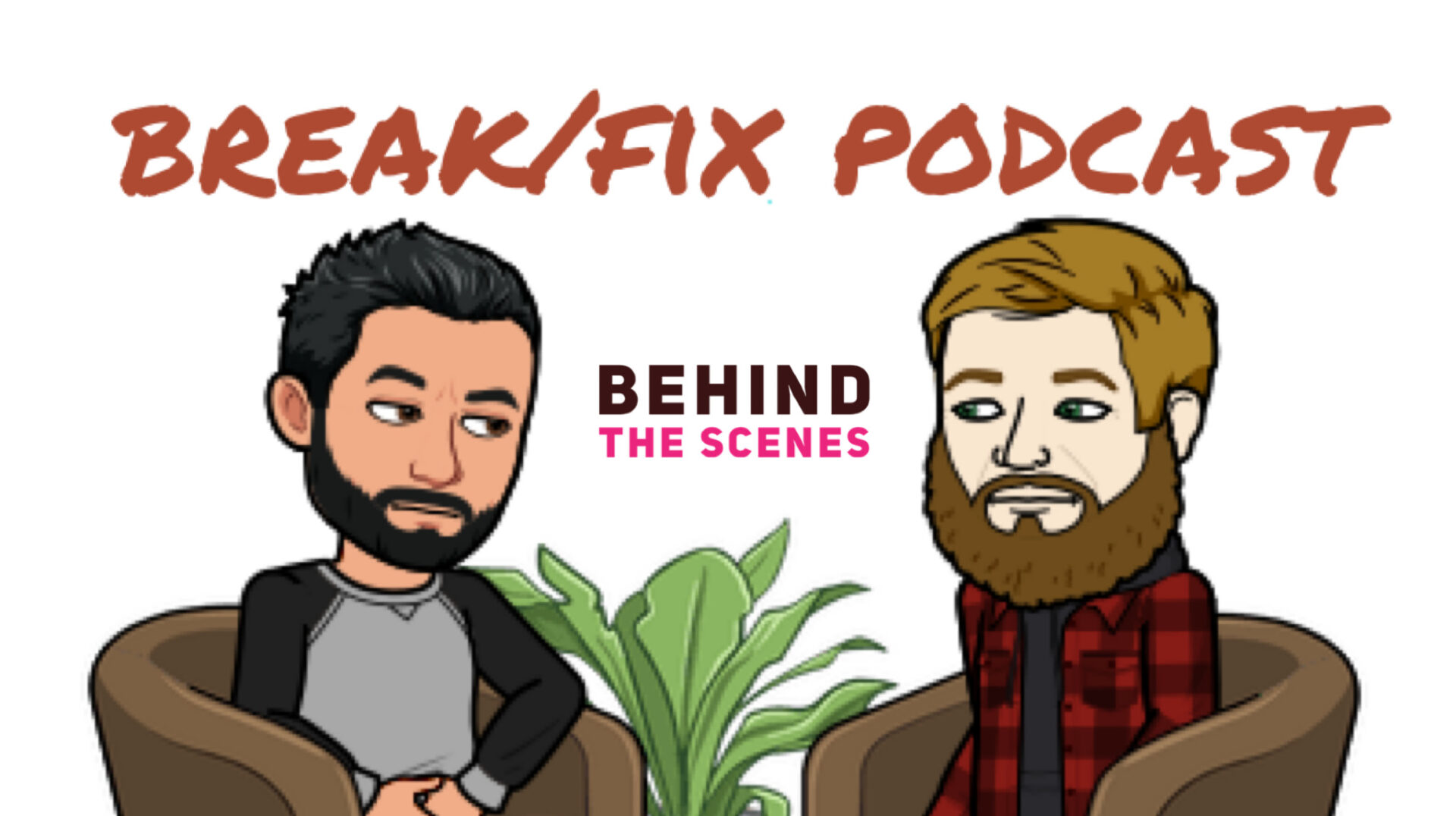
Consider becoming a GTM Patreon Supporter and get behind the scenes content and schwag!
Do you like what you've seen, heard and read? - Don't forget, GTM is fueled by volunteers and remains a no-annual-fee organization, but we still need help to pay to keep the lights on... For as little as $2.50/month you can help us keep the momentum going so we can continue to record, write, edit and broadcast your favorite content. Support GTM today! or make a One Time Donation.

If you enjoyed this episode, please go to Apple Podcasts and leave us a review. That would help us beat the algorithms and help spread the enthusiasm to others by way of Break/Fix and GTM. Subscribe to Break/Fix using your favorite Podcast App:
Over the years, Taylor’s perspective of the motorsport’s world, and her placement in it, has evolved. She now recognizes the power and greater meaning behind being a female in a male-dominated trade. With that, she has made it a personal mission to give back to a sport she is so passionate about by mentoring younger girls interested in racing. Taylor is also an active member of Women in Motorsports North America, regularly takes part in professional speaking engagements, is a Contributing Writer, podcast co-host, and Founder of The Safety Bank.
To learn more about Taylor be sure to logon to www.taylorferns.com or follow her on social media @taylorlferns on Facebook, @taylorferns on Instagram and Twitter, as well as her YT and TikTok channels and you can always connect with her via LinkedIn.
Support Women In Motorsports North America (WIMNA)
Women in Motorsports North America is a community of professionals devoted to supporting opportunities for women across all disciplines of Motorsport by creating an inclusive, resourceful environment to foster mentorship, advocacy, education, and growth, thereby ensuring the continued strength and successful future of our sport.


